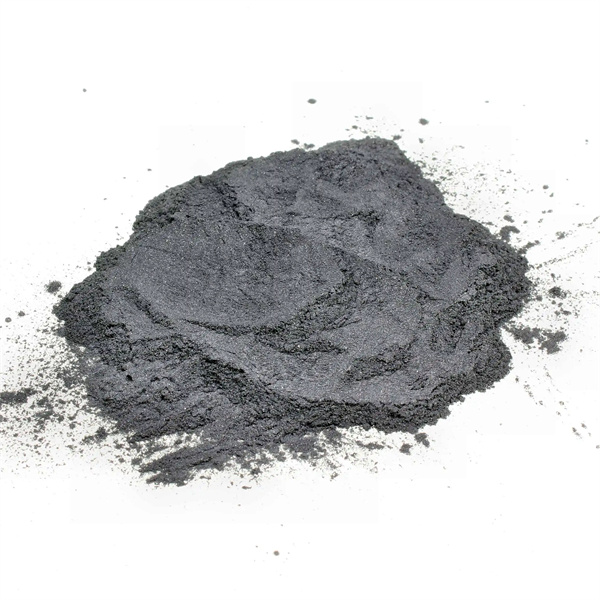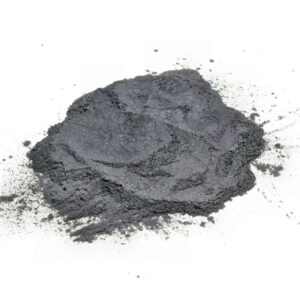Übersicht
Die Gaszerstäubung ist ein Verfahren zur Herstellung von Metallpulver, bei dem Hochgeschwindigkeits-Inertgasstrahlen eingesetzt werden, um einen geschmolzenen Metallstrom in feine, kugelförmige Pulverpartikel aufzulösen. Die Gaszerstäubungsverfahren ermöglicht eine hervorragende Kontrolle der Partikelgrößenverteilung, Morphologie, Reinheit und Mikrostruktur des Pulvers.
Zu den wichtigsten Eigenschaften von gaszerstäubtem Pulver gehören die kugelförmige Partikelform, die hohe Reinheit, die feine Größe von bis zu 10 Mikrometern und die einheitliche Zusammensetzung. Die Gaszerstäubung erleichtert fortschrittliche pulverbasierte Fertigungstechniken wie Metallspritzguss, additive Fertigung und pulvermetallurgisches Pressen und Sintern.
Dieser Leitfaden bietet einen umfassenden Überblick über den Gaszerstäubungsprozess und Pulver. Er behandelt Zerstäubungsmethoden, Partikelbildung, Prozessparameter, Ausrüstung, geeignete Legierungen, Pulvereigenschaften, Produktspezifikationen, Anwendungen und Lieferanten. Hilfreiche Vergleichstabellen fassen die technischen Details zusammen.

Wie die Gaszerstäubungsprozess Funktioniert
Bei der Gasverdüsung wird die geschmolzene Legierung in Pulver umgewandelt, wobei die folgenden grundlegenden Schritte durchgeführt werden:
Prozessstufen der Gaszerstäubung
- Schmelzen - Die Legierung wird in einem Induktionsofen geschmolzen und über ihre Liquidustemperatur hinaus überhitzt.
- Gießen - Strom aus geschmolzenem Metall, der in eine Zerstäubungskammer gegossen wird
- Zerstäubung - Hochgeschwindigkeits-Inertgasdüsen zerlegen das Metall in feine Tröpfchen
- Erstarrung - Metalltropfen verfestigen sich beim Fallen durch die Kammer schnell zu Pulverpartikeln
- Sammlung - Pulverpartikel, die in einem Zyklonabscheider am Boden des Turms gesammelt werden
Das Schlüsselphänomen tritt auf, wenn die kinetische Energie der Gasstrahlen die Oberflächenspannung des Metalls überwindet und den Flüssigkeitsstrom in Tröpfchen zerreißt. Diese Tröpfchen gefrieren zu Pulverpartikeln mit kugelförmiger Morphologie.
Eine sorgfältige Prozesssteuerung ermöglicht maßgeschneiderte Pulverpartikelgrößen, Reinheit und Mikrostrukturen.
Methoden der Gaszerstäubung
Es gibt zwei Hauptmethoden der Gaszerstäubung, die in der Industrie verwendet werden:
Gaszerstäubungsmethoden
| Methode | Beschreibung | Vorteile | Beschränkungen |
|---|---|---|---|
| Eng gekoppelte Zerstäubung | Düse in unmittelbarer Nähe des Schmelzpunktes | Kompakte Bauweise, geringerer Gasverbrauch | Mögliche Schmelzekontamination durch die Düse |
| Freifall-Zerstäubung | Düse unterhalb des Pourpoint angeordnet | Geringere Verunreinigung der Schmelze | Erfordert einen höheren Zerstäubungsturm |
Eng gekoppelte Ausführungen recyceln das Zerstäubungsgas, riskieren aber eine gewisse Oxidation der Schmelze. Der freie Fall bietet eine sauberere Atmosphäre mit geringerem Risiko einer Düsenreaktion.
Weitere Varianten sind Mehrfachgasdüsen, Ultraschallzerstäubung, Zentrifugalzerstäubung und koaxiale Düsenkonstruktionen für spezielle Anwendungen.
Gaszerstäubungsdüsen-Designs
Verschiedene Düsenkonstruktionen erzeugen die für die Zerstäubung erforderlichen Hochgeschwindigkeitsgasstrahlen:
Typen von Gaszerstäubungsdüsen
| Düse | Beschreibung | Gasflussmuster | Tröpfchengröße |
|---|---|---|---|
| De Laval | Konvergent-divergierende Düse | Überschall | Große, weite Verbreitung |
| Konisch | Einfache konische Blende | Sonic | Mittel |
| Schlitz | Längliche Schlitzöffnung | Sonic | Klein |
| Mehrere | Array von Mikrodüsen | Schall/Supersonenschall | Sehr kleine, enge Verteilung |
De Laval-Düsen nutzen die Gasbeschleunigung auf Überschallgeschwindigkeiten, haben aber eine komplexe Geometrie. Schalldüsen mit vereinfachten Formen bieten mehr Flexibilität.
Kleinere Tröpfchen und eine genau kontrollierte Größenverteilung werden durch den Einsatz mehrerer Mikrodüsen oder Schlitzkonfigurationen erreicht.
Pulverformung und Verfestigung
Die Scherung von geschmolzenem Metall in Tropfen und die anschließende Erstarrung folgen unterschiedlichen Mechanismen:
Stadien der Puderbildung
- Trennung - Rayleigh-Strahlinstabilität verursacht Störungen und Tröpfchenbildung
- Verzerrung - Tröpfchen dehnen sich aufgrund der Luftwiderstandskräfte zu Bändern aus
- Riss - Bänder zerfallen in Tröpfchen, die der endgültigen Größe nahe kommen
- Erstarrung - Schnelle Abkühlung durch Gaskontakt und Strahlung bildet feste Partikel
- Verzögerung - Geschwindigkeitsverlust bei der Abwärtsbewegung der Partikel durch die Zerstäubungskammer
Die kombinierten Auswirkungen von Oberflächenspannung, Turbulenz und Luftwiderstand bestimmen die endgültigen Partikelgrößen und die Morphologie. Maximale Partikelabkühlungsraten über 1.000.000 °C/s führen zum Abschrecken metastabiler Phasen.
Prozess-Parameter
Zu den wichtigsten Prozessparametern der Gaszerstäubung gehören:
Gaszerstäubungsprozess Parameter
| Parameter | Typischer Bereich | Wirkung auf Pulver |
|---|---|---|
| Gasdruck | 2-10 MPa | Steigender Druck verringert die Partikelgröße |
| Gasgeschwindigkeit | 300-1200 m/s | Höhere Geschwindigkeit erzeugt feinere Partikel |
| Durchflussmenge des Gases | 0,5-4 m3/min | Erhöht den Durchfluss für höheren Durchsatz und feinere Größen |
| Überhitzung der Schmelze | 150-400°C | Höhere Überhitzung reduziert die Satellitenbildung und verbessert den Pulverfluss |
| Schmelzflussrate | 10-150 kg/min | Niedrigere Gießgeschwindigkeiten verbessern die Partikelgrößenverteilung |
| Durchmesser des Schmelzstrahls | 3-8 mm | Größerer Stream ermöglicht höheren Durchsatz |
| Trennungsabstand | 0.3-1 m | Größere Entfernung reduziert den Satelliteninhalt |
Die Abstimmung dieser Parameter ermöglicht die Kontrolle der Partikelgröße, der Form, der Produktionsrate und anderer Eigenschaften des Pulvers.
Legierungssysteme für die Gaszerstäubung
Die Gasverdüsung kann fast jede Legierung in Pulverform verarbeiten, einschließlich:
Für die Gaszerstäubung geeignete Legierungen
- Titan-Legierungen
- Nickel-Superlegierungen
- Kobalt-Superlegierungen
- Rostfreie Stähle
- Werkzeugstähle
- Niedrig legierte Stähle
- Eisen- und Nickelbasislegierungen
- Edelmetalle
- Intermetallische Werkstoffe
Die Gaszerstäubung erfordert Schmelztemperaturen unterhalb des Zersetzungspunkts des Zerstäubungsgases. Typische Gase sind Argon, Stickstoff und Helium.
Hochschmelzende Legierungen mit sehr hohem Schmelzpunkt wie Wolfram können schwierig zu zerstäuben sein und erfordern oft eine spezielle Verarbeitung.
Die meisten Legierungen erfordern eine Überhitzung der Schmelze weit über die Liquidustemperatur, um eine ausreichende Fließfähigkeit für die Zerstäubung in fein verteilte Tröpfchen zu erhalten.
Merkmale des gaszerstäubten Pulvers
Typische Eigenschaften von gaszerstäubtem Pulver:
Eigenschaften von gaszerstäubtem Pulver
| Charakteristisch | Beschreibung | Bedeutung |
|---|---|---|
| Morphologie der Partikel | Hochgradig kugelförmig | Ausgezeichnete Fließfähigkeit, Packungsdichte |
| Partikelgrößenverteilung | Einstellbar im Bereich 10-150 μm | Steuert Pressdichte und Sinterverhalten |
| Partikelgrößenbereich | Kann enge Verteilungen erreichen | Bietet einheitliche Komponenteneigenschaften |
| Chemische Reinheit | In der Regel >99,5% ohne geplante Legierungen | Verschmutzung durch Düsenreaktionen vermeiden |
| Sauerstoffgehalt | <1000 ppm | Entscheidend für Hochleistungslegierungen |
| Scheinbare Dichte | Bis zu 60% an theoretischen | Indikativ für Druckfähigkeit und Handhabung |
| Innere Porosität | Sehr niedrig | Gut für mikrostrukturelle Homogenität |
| Morphologie der Oberfläche | Glatt mit einigen Satelliten | Zeigt die Prozessstabilität an |
Die Kugelform und die einstellbare Größenverteilung erleichtern die Verwendung in sekundären Pulververfestigungsprozessen. Die strenge Kontrolle über Sauerstoff und Chemie ermöglicht Hochleistungslegierungen.
Spezifikationen für gaszerstäubte Pulver
Internationale Standardspezifikationen helfen bei der Definition:
- Partikelgrößenverteilung
- Scheinbare Dichtebereiche
- Hall-Durchflussmengen
- Annehmbare Sauerstoff- und Stickstoffwerte
- Zulässiges Mikrogefüge und Porosität
- Grenzwerte für die chemische Zusammensetzung
- Probenahmeverfahren
Dies unterstützt die Qualitätskontrolle und ein reproduzierbares Pulververhalten.
Spezifikationen für gaszerstäubte Pulver
| Standard | Materialien | Parameter | Testmethoden |
|---|---|---|---|
| ASTM B964 | Titan-Legierungen | Partikelgröße, Chemie, Mikrostruktur | Röntgenbeugung, Mikroskopie |
| AMS 4992 | Titanlegierungen für die Luft- und Raumfahrt | Partikelgröße, Sauerstoffgehalt | Siebanalyse, Inertgasfusion |
| ASTM B823 | Werkzeugstahlpulver | Schüttgewicht, Durchflussmenge | Hall-Durchflussmesser, Scott-Volumenzähler |
| SAE AMS 5050 | Nickel-Legierungen | Partikelgröße, Morphologie | Laserbeugung, SEM |
| MPIF 04 | Viele Standard-Legierungen | Schüttgewicht, Durchflussmenge | Hall-Durchflussmesser, abgestochene Dichte |
Die Spezifikationen sind auf kritische Anwendungsanforderungen in der Luft- und Raumfahrt, der Automobilindustrie, der Medizintechnik und anderen qualitätsorientierten Branchen zugeschnitten.
Anwendungen von gaszerstäubten Pulvern
Gasverdüste Pulver ermöglichen die Herstellung von Hochleistungskomponenten durch:
- Metall-Spritzgießen (MIM)
- Additive Fertigung (AM)
- Heiß-Isostatisches Pressen (HIP)
- Pulver-Schmieden
- Thermisches und kaltes Sprühen
- Pulvermetallurgie Pressen und Sintern
Vorteile gegenüber geschmiedeten Materialien:
- Komplexe Geometrien mit feinen Merkmalen
- Hervorragende mechanische Eigenschaften
- Konsolidierung bei nahezu voller Dichte
- Neuartige und maßgeschneiderte Legierungen
- Palette von Materialoptionen
Die Gaszerstäubung eignet sich hervorragend zur Herstellung von kugelförmigen, fließenden Pulvern, die sich optimal für die automatisierte Verarbeitung komplizierter Komponenten mit hohen Qualitätsstandards in verschiedenen Branchen eignen.
Globale Anbieter von gaszerstäubten Pulvern
Zu den weltweit führenden Anbietern von gaszerstäubten Pulvern gehören:
Hersteller von gaszerstäubten Pulvern
| Unternehmen | Materialien | Fähigkeiten |
|---|---|---|
| ATI-Pulvermetalle | Titan-, Nickel- und Werkzeugstahl-Legierungen | Breites Legierungsspektrum, hohe Stückzahlen |
| Praxair Oberflächentechnologien | Titan-, Nickel- und Kobalt-Legierungen | Große Auswahl an Legierungen, Lohnbearbeitung |
| Sandvik Fischadler | Nichtrostende Stähle, niedrig legierte Stähle | Spezialisten für Eisenwerkstoffe |
| Höganäs | Werkzeugstähle, nichtrostende Stähle | Kundenspezifische Legierungen, Pulver für die additive Fertigung |
| Zimmerer-Zusatzstoff | Titan-, Nickel- und Kobalt-Legierungen | Kundenspezifische Legierungen, spezielle Partikelgrößen |
Kleinere regionale Anbieter bieten ebenfalls gaszerstäubte Pulver an, oft für Nischenlegierungen oder -anwendungen.
Viele Anbieter übernehmen auch das Sieben, Mischen, Beschichten und andere Nachbearbeitungsschritte für Pulver.
Vorteile und Beschränkungen der Gaszerstäubung
Gaszerstäubung - Pro und Kontra
| Vorteile | Beschränkungen |
|---|---|
| Sphärische Morphologie des Pulvers | Höhere Anfangsinvestitionskosten |
| Kontrollierte Partikelgrößenverteilungen | Erfordert hochreines Inertgas |
| Anwendbar auf viele Legierungssysteme | Schwer zu zerstäubende hitzebeständige Legierungen |
| Saubere Pulverchemie und Mikrostruktur | Kann zu Düsenerosion führen |
| Schnelles Abschrecken von Pulvern bewahrt metastabile Phasen | Erfordert eine Überhitzung der Schmelze weit über den Liquidus |
| Kontinuierlicher Prozess der Pulverherstellung | Die Form des Pulvers begrenzt die Grünfestigkeit |
Die kugelförmige Form und die feine Größe des gaszerstäubten Pulvers bieten deutliche Vorteile, sind jedoch mit höheren Betriebskosten verbunden als bei einfacheren mechanischen Zerkleinerungsprozessen.
Auswahl von gaszerstäubten Pulvern
Wichtige Aspekte bei der Auswahl von gasverdüstem Pulver:
- Gewünschte Chemie und Legierungszusammensetzung
- Ziel-Partikelgrößenverteilung
- Geeignete Schein- und Klopfdichtebereiche
- Sauerstoff- und Stickstoffgrenzwerte je nach Anwendung
- Fließeigenschaften für die automatisierte Handhabung von Pulver
- Stichprobenverfahren zur Gewährleistung der Repräsentativität
- Technisches Know-how und Kundendienst des Anbieters
- Gesamtkostenüberlegungen
Die Erprobung von Prototypen hilft bei der Qualifizierung neuer Legierungen und gaszerstäubter Pulver für eine bestimmte Anwendung. Die enge Zusammenarbeit mit dem Pulverhersteller ermöglicht eine Optimierung.
FAQ
Was ist die kleinste Teilchengröße, die durch Gaszerstäubung erzeugt werden kann?
Spezialdüsen können Pulver im einstelligen Mikrometerbereich bis hinunter zu 1-5 Mikrometern erzeugen. Ultrafeines Pulver hat jedoch eine sehr geringe Schüttdichte und weist starke Van-der-Waals-Kräfte zwischen den Partikeln auf, was eine sorgfältige Handhabung erfordert.
Was verursacht Pulversatelliten bei der Gaszerstäubung?
Satelliten bilden sich, wenn die Tröpfchen zu groß sind oder zusammenstoßen und sich teilweise wieder vereinigen, bevor sie vollständig erstarren. Höhere Überhitzung, niedrigere Gießgeschwindigkeiten und ein größerer Trennungsabstand tragen zur Reduzierung der Satellitenbildung bei.
Warum ist hochreines Inertgas für die Gaszerstäubung erforderlich?
Hochgeschwindigkeitsgasstrahlen können mit der Zeit Metall von der Düse abtragen und das Pulver verunreinigen. Reaktive Gase wie Stickstoff und Sauerstoff wirken sich ebenfalls negativ auf die Reinheit des Pulvers und die Leistung der Legierung aus.
Wie verhält sich die Gaszerstäubung im Vergleich zur Wasserzerstäubung?
Die Wasserzerstäubung erzeugt ein unregelmäßigeres Pulver mit einer Größe von typischerweise 50-150 Mikrometern. Die Gaszerstäubung ermöglicht feinere Größen bis hinunter zu 10 Mikrometern mit kugelförmigen Morphologien, die für Press- und Sinteranwendungen bevorzugt werden.
Was ist Zentrifugalzerstäubung?
Bei der Zentrifugalzerstäubung wird das geschmolzene Metall in eine sich drehende Scheibe gegossen, die feine geschmolzene Metalltröpfchen abwirft, die sich zu Pulver verfestigen. Diese Methode bietet höhere Produktionsraten als die Gaszerstäubung, aber eine geringere Kontrolle der Pulvergröße und -form.
Kann man bei der Gasverdüsung schnell zwischen den Legierungen wechseln?
Ja, mit speziellen Anlagen kann der Schmelzestrom schnell verändert werden, um Verbundstoffe und legierte Pulver herzustellen. Die Kreuzkontamination zwischen den Legierungen sollte jedoch durch Spülen der Kammern minimiert werden.
Schlussfolgerung
Der Gaszerstäubungsprozess erzeugt kugelförmige, fließende Metallpulver mit streng kontrollierter Partikelgrößenverteilung, Reinheit und mikrostrukturellen Eigenschaften, die sich optimal für fortschrittliche Pulverkonsolidierungsprozesse in kritischen Anwendungen eignen. Die sorgfältige Manipulation der Prozessparameter und spezielle Düsenkonstruktionen ermöglichen eine umfassende Kontrolle über die endgültigen Pulvereigenschaften. Durch kontinuierliche Weiterentwicklung bietet die Gaszerstäubung den Ingenieuren mehr Möglichkeiten zur Herstellung von Hochleistungskomponenten auf kreative Weise.



